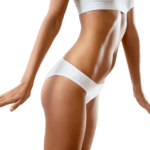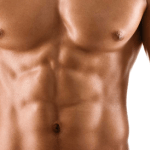Facial Skin Resurfacing in Alpharetta, GA
As we age, certain areas of the facial skin need more than lifts or facial fillers. Most notably are the wrinkled areas around the mouth and eyes. These areas are especially amenable to laser resurfacing, a procedure also known as skin resurfacing or fractional resurfacing.
Laser resurfacing is an effective way of reversing the damaging effects of sun exposure, aging and lifestyle habits (such as smoking) on the quality, color and texture of your skin. Laser resurfacing is often done in conjunction with facelifts and eyelid surgery, but some patients may be better suited for a chemical peel or dermabrasion.
Dr. Graivier is one of the leading experts in laser resurfacing. He has taught numerous courses and lectured to surgeons and dermatologists worldwide on this technology and his personal techniques.
Laser Skin Resurfacing Consultation
At The Graivier Center, we value our personal relationships with our patients. Each patient is treated as an individual, and as such, is given a personal consultation prior to any treatment. Dr. Graivier and his staff will meet with you to help you make decisions regarding which procedure(s) or treatment(s) will result in achieving your aesthetic goals. The consultation will conclude with a discussion about the desired treatment, your expectations, the benefits and risks associated with the treatment and post-treatment recovery.
Laser Skin Resurfacing Complementary Procedures
It is a common practice for patients undergoing laser skin resurfacing to combine several procedures at once that will offer complementary or enhanced results. At The Graivier Center, we will take the time to walk potential patients through all of the risks and benefits of each surgery, whether you choose a single treatment or multiple treatments.
Patients undergoing laser skin resurfacing can elect to combine the following procedures for enhanced results:
- Brow lift
- Face lift
- Facial fillers
- Fat grafting
Laser Skin Resurfacing
Cosmetic laser resurfacing is usually done on an outpatient basis and typically takes between 30 minutes and two hours.
Patients with darker skin tones have a greater risk of healing with darker pigmentation (hyperpigmentation). This may be minimized by use of a bleaching agent after laser skin resurfacing.
The Graivier Center offers several different types of laser skin resurfacing:
- Laser Skin Resurfacing
- Microlaser Peel
- Profractional XC Laser Therapy
Laser Skin Resurfacing
Dr. Graivier uses the Erbium YAG Laser (Sciton) to send laser energy to the outer skin surface. This removes the outer layers of skin and stimulates fibroblasts to produce collagen, resulting in smoother, tighter, less wrinkled skin. The entire face can be resurfaced to help remove the lines and sun-damaged skin and replace it with fresh, younger-looking skin. Facial fat grafting to add volume is often performed at the same time as resurfacing.
Acne scarring, pigment changes and larger pores can be treated. This type of laser can also be used on your neck, chest or hands.
Downtime is about one week.
Microlaser Peel
Microlaser peel is a skin freshening peel with less downtime and quicker recovery than resurfacing. The laser peel removes the outer layers of the skin without a large amount of heat being generated. It does not address the deeper wrinkles, but your skin is markedly fresher and rejuvenated. Superficial actinic keratosis and seborrheic keratosis are removed, and the procedure is done with topical anesthesia and oral sedation. The recovery time is between two and three days. It leaves your skin smoother and more radiant.
Profractional XC Laser Therapy
Profractional XC Laser Therapy uses fractionated laser energy to make micro-ablated channels in the skin. Laser channels penetrate into the deeper layers of the skin leaving surrounding tissue intact to promote rapid healing with minimal downtime.
This stimulates production of collagen and elastin, which will thicken and make the skin healthier. This is particularly effective for acne scaring and for stretch marks and other areas of white scars.
It is often combined with micro-laser peels and has a rapid recovery, usually one to three days.
While the effects of laser resurfacing can last for many years, the normal aging process means that wrinkles and expression lines will reoccur. You may repeat laser resurfacing as necessary.
Laser Skin Resurfacing Recovery
Your recovery time will depend on which laser skin-resurfacing treatment you choose. Recovery varies from one day to one week.
Skin that is treated with laser resurfacing may react in different ways. For most patients, it will feel like a mild sunburn, with some redness and swelling. Patients may also experience itching or stinging for a few days after the procedure. Patients are advised to not scratch or pick at the treatment area as this may lead to scarring.
The majority of patients will experience a drying and peeling of the treatment area approximately five days after.
Patients will need to use sunscreen and moisturizer every day. Dr. Graivier will help you select the correct type of sunscreen and moisturizer to best protect your treated areas. All patients will be extra sensitive to sunlight for up to one year. The Graivier Center advises that patients minimize sun exposure and use the suggested sunscreen liberally.
Some patients may experience red or pink skin for several months after the laser skin resurfacing.
When to Consider Laser Skin Resurfacing
- If your facial skin is aged or sun-damaged, with wrinkling around eyes, forehead or mouth
- If you have irregular changes in skin color, such as blotchiness, liver spots or brown spots
- If you have irregular changes in skin color, such as blotchiness, liver spots or brown spots
- If you have scars that have made the surface of your skin uneven, such as acne or chickenpox scars
- If you have certain precancerous skin growths
- If you have enlarged oil glands on the nose

Laser Skin Resurfacing Before and After Results
At The Graivier Center, we offer advanced laser skin resurfacing treatments to enhance the texture and appearance of your skin. These treatments address concerns such as fine lines, wrinkles, acne scars, and sun damage, delivering smooth, glowing skin. Our laser skin resurfacing before and after gallery showcases real-life transformations of clients who have experienced remarkable improvements. With precise care and state-of-the-art technology, we are committed to helping you achieve youthful, rejuvenated skin that complements your natural beauty.
Laser Skin Resurfacing Cost in Alpharetta, GA
The laser skin resurfacing cost at The Graivier Center in Alpharetta, GA, varies depending on factors such as the specific treatment area, the type of resurfacing used, and the extent of the procedure. During your consultation, our skilled team will evaluate your skin concerns and provide a personalized cost estimate tailored to your needs. We believe in offering transparent pricing and will guide you through the process to ensure you are fully informed. To make this transformative treatment more accessible, we offer flexible financing options that allow you to manage costs comfortably while achieving your skin goals.
Serving Alpharetta, GA and Surrounding Areas
Conveniently located in Alpharetta, The Graivier Center proudly serves clients from surrounding areas, including Milton (5 miles), Roswell (6 miles), Johns Creek (7 miles), Sandy Springs (10 miles), and Dunwoody (12 miles). Our experienced team is dedicated to providing exceptional laser skin resurfacing treatments and other cosmetic services to clients throughout North Atlanta. Whether you are looking to improve skin texture or rejuvenate your complexion, we offer personalized care to help you achieve the beautiful skin you desire. Contact The Graivier Center today to schedule your consultation and discover the power of laser skin resurfacing for a smoother, more youthful appearance.












